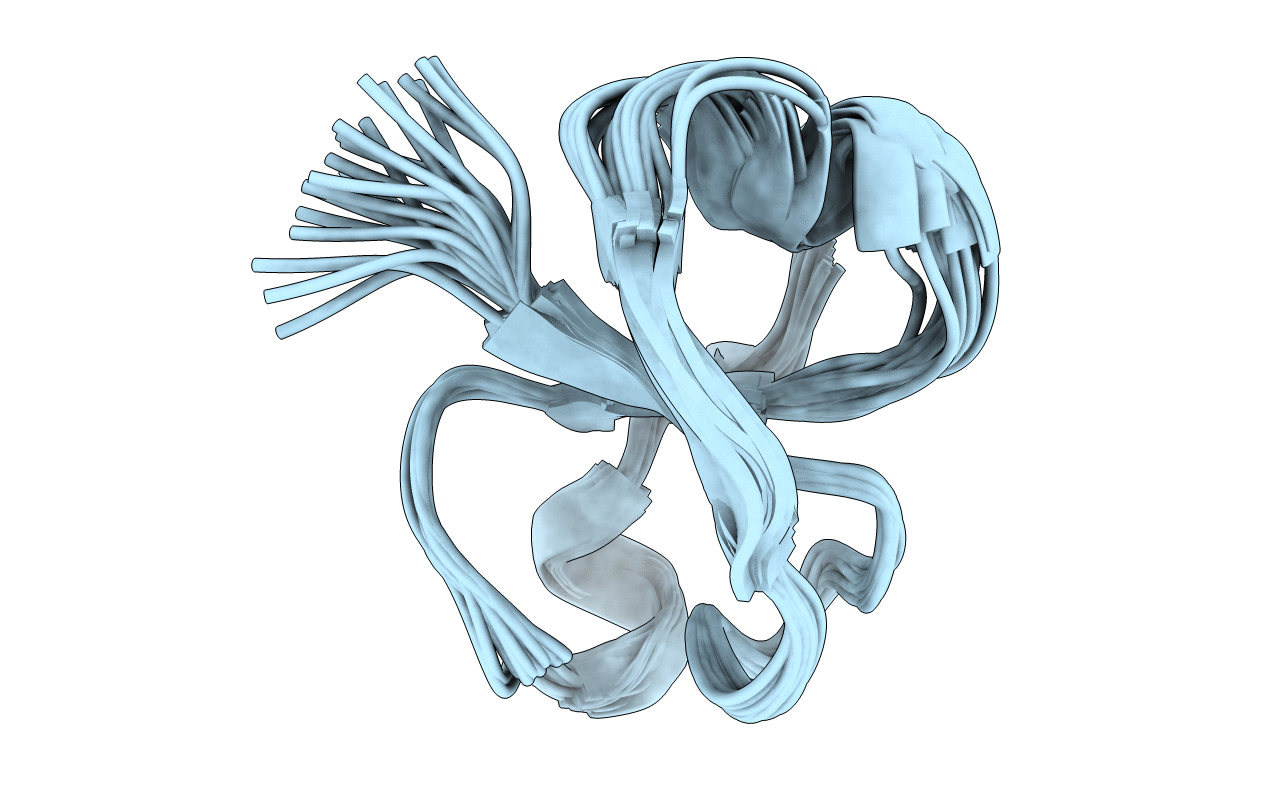
Deposition Date
2020-07-02
Release Date
2021-02-10
Last Version Date
2024-11-06
Entry Detail
PDB ID:
6XN9
Keywords:
Title:
Solution NMR structure of recifin, a cysteine-rich tyrosyl-DNA Phosphodiesterase I modulatory peptide from the marine sponge Axinella sp.
Biological Source:
Source Organism:
Axinella sp. 1 TF-2017 (Taxon ID: 2041915)
Method Details:
Experimental Method:
Conformers Calculated:
50
Conformers Submitted:
20
Selection Criteria:
structures with acceptable covalent geometry


